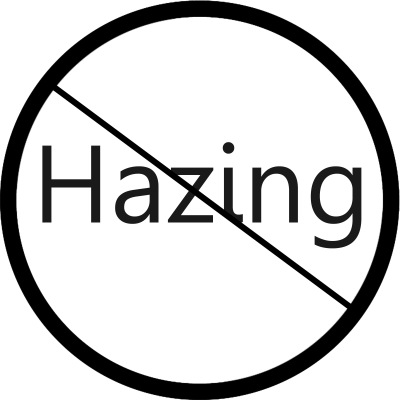 If you’re a member of a student organization and tell anyone trying to join the organization they have to do anything, you run the risk of hazing them. At least this is what it seems like at a first glance of Gustavus Adolphus College’s hazing policy.
If you’re a member of a student organization and tell anyone trying to join the organization they have to do anything, you run the risk of hazing them. At least this is what it seems like at a first glance of Gustavus Adolphus College’s hazing policy.
Gustavus defines hazing as “any action taken or situation created, intentionally or unintentionally whether on or off campus premises, to produce mental or physical discomfort, fatigue, humiliation, intimidation, embarrassment, harassment or ridicule or that disrupts community life or academic commitments regardless of the intent or end result. Such actions may be perpetrated by an individual, group, or organization against an individual or individuals.”
Now for a little background and context. Hazing is seen as a problem among different student organizations at the high school and college level nationally. The main reason being that hazing activities seem to often lead to people getting hurt (physically and/or emotionally) and even dying.
Now, it is surprisingly difficult to get an accurate count of deaths or injuries related to hazing on college campuses since the federal government doesn’t keep statistic on those kinds of incidents. Therefore, I’m not going to give you statistical examples, but on the Internet it is easy to find reports and studies about hazing that show the severity of the problems.
Even if some reports and professional studies are biased or have skewed numbers, the fact remains that a significant number of people are suffering or dying as a result of hazing, making it a problem that needs addressing in our current society and culture.
Hazing is awful. It shouldn’t be happening. Something has to be done about it. Thus Gustavus has adopted a zero tolerance policy towards hazing. The problem arises though, that not everyone agrees on what constitutes as hazing.
If you define hazing too narrowly, you might end up not being able to give proper justice to victims and perpetrators. On the other hand, if you define it too broadly, you might end up punishing people who had no intention of hazing, and were just trying to build bonds of friendship or instill values of the organization among its members.
For example, is it hazing if an organization asks members to wear a piece of clothing or certain style of clothing? Perhaps an organization values respect and holding one’s self professionally and therefore asks its members for a couple days or once a week to dress nicely. Perhaps an organization asks its members to wear a certain colored piece of clothing or accessory in order for them to express their pride and support for their organization, or express and build unity amongst its members.
“Hazing is awful. It shouldn’t be happening. Something has to be done about it. Thus Gustavus has adopted a zero tolerance policy towards hazing. The problem arises though, that not everyone agrees on what constitutes hazing.”
This is analogous to sport teams in a way. In order to play on a sports team you are required to wear a uniform. One of the main reasons for this is for officials and spectators to keep teams apart but another aspect is to build a sense of oneness and unity amongst its members. Why can’t the same be done to at least a minor extent and period of time among other student organizations?
Is it hazing for an organization to require its members to memorize a creed or text that embodies the organization’s mission or values? Under the Gustavus definition of hazing it may be.
With how broad Gustavus’ definition is, it could potentially investigate or condemn any student organization for “any” action it asks it’s members to take or participate in in which a member experiences “discomfort” or their regular life is disrupted “regardless of the intent or result” of the action or activity.
Then again, with how large a problem hazing is on college campuses and here at Gustavus, if we really want to end hazing and harm to students perhaps we need a sweeping definition to give administration leeway to take care of serious incidents that occur and use prudent judgment on minor incidents that may technically fall under the definition of hazing. Just because an incident falls under the technical broad definition of hazing doesn’t mean that it need to be treated with the same severity of more serious and harmful incidents.
Perhaps there are other solutions to the problem of hazing as well. Perhaps the solution doesn’t need to be a top-down crackdown by administrators on student organizations. Perhaps the solution can come from the bottom up. Maybe students and organizations can assume responsibility to change the culture of hazing at Gustavus and on a national level.
They can hold each other and themselves more accountable and impose their own sanctions and corrective actions amongst themselves to bring hazing to an end. But maybe I’m a dreamer. Either way, the tides are changing and hazing looks as though it’s coming to an end. It’s up to student organizations to decide on how they want this change to occur.
-Matthew Glasier
